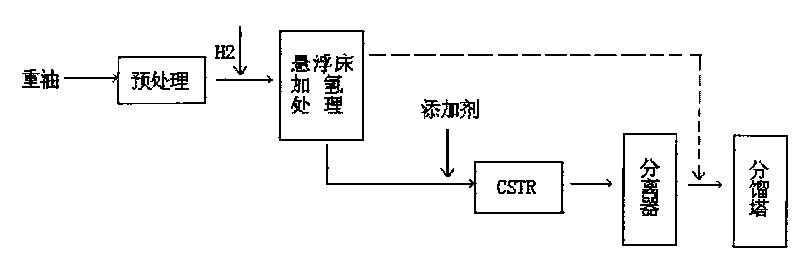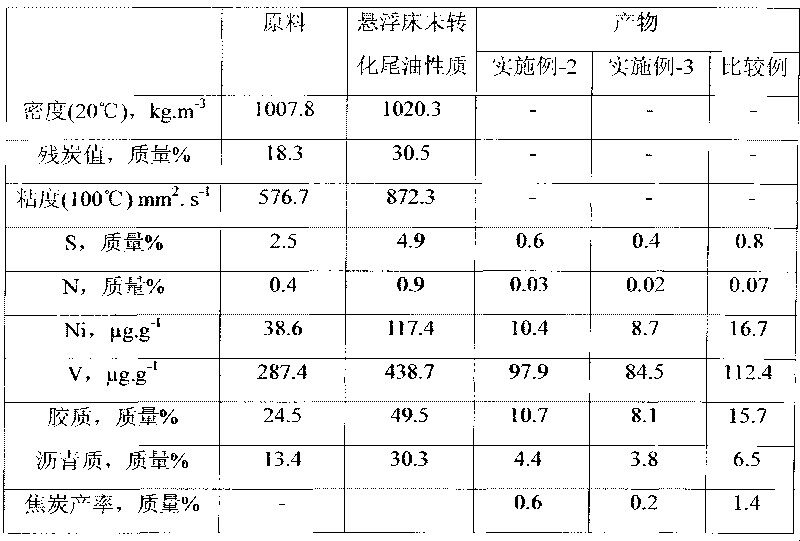Combined technological method for heavy oil modification
A combined process and heavy oil upgrading technology, used in the petroleum industry, hydrocarbon oil cracking and other directions, can solve the problem of high coking rate, and achieve the effect of enhancing the reaction effect, reducing the coking tendency and improving the reaction effect.
- Summary
- Abstract
- Description
- Claims
- Application Information
AI Technical Summary
Problems solved by technology
Method used
Image
Examples
Embodiment -1
[0022] After the Tahe residual oil is treated with the same filtration as the conventional process, add 200 μg / g of water-soluble or oil-soluble multi-metal catalyst (using Ni-containing salt and Mo-containing salt as raw materials, the atomic ratio of the two metals is 1:3) The solution is subjected to suspension bed hydrocracking, and the suspension bed hydrocracking is carried out. The conditions are conventional process operating conditions, temperature: 390°C, pressure 15MPa, space velocity 1.0h -1 , the ratio of hydrogen to oil is 600:1, and the conversion rate of the suspension-bed hydrocracking is 62%. The suspension-bed hydrocracking can operate stably for a long period at this low conversion rate.
[0023] The unconverted tail oil of suspension bed hydrocracking is then subjected to supercritical treatment, and tetralin is added to the static mixer, (keep excess tetralin, the weight ratio of heavy oil to tetralin is 1:6) , and then after the material is heated, it en...
Embodiment -2
[0025] Using Tahe residual oil as raw material, the suspension bed hydrocracking steps are the same as in Example-1, the reaction temperature is controlled at 405°C, and the conversion rate is 74%. Suspension bed hydrocracking can operate stably for a long period at this conversion rate. Suspension-bed hydrocracking unconverted tail oil is subjected to supercritical treatment, the hydrogen-donating solvent is decahydronaphthalene, the weight ratio of Tahe residual oil to hydrogen-donating solvent is 1:2, the reaction pressure is 35MPa, the reaction temperature is 450°C, and the reaction time is For 2.5h (CSTR is continuous feeding and discharging, and the reaction time is the average residence time of the material). After being processed by the method of the present invention, the reaction results are shown in Table 2.
Embodiment -3
[0027] By the same method of embodiment 2, water is also added when using decahydronaphthalene, and the weight ratio of water and supercritical treatment feed is 1: 1, and reaction result is shown in Table 2.
PUM
 Login to View More
Login to View More Abstract
Description
Claims
Application Information
 Login to View More
Login to View More - Generate Ideas
- Intellectual Property
- Life Sciences
- Materials
- Tech Scout
- Unparalleled Data Quality
- Higher Quality Content
- 60% Fewer Hallucinations
Browse by: Latest US Patents, China's latest patents, Technical Efficacy Thesaurus, Application Domain, Technology Topic, Popular Technical Reports.
© 2025 PatSnap. All rights reserved.Legal|Privacy policy|Modern Slavery Act Transparency Statement|Sitemap|About US| Contact US: help@patsnap.com



